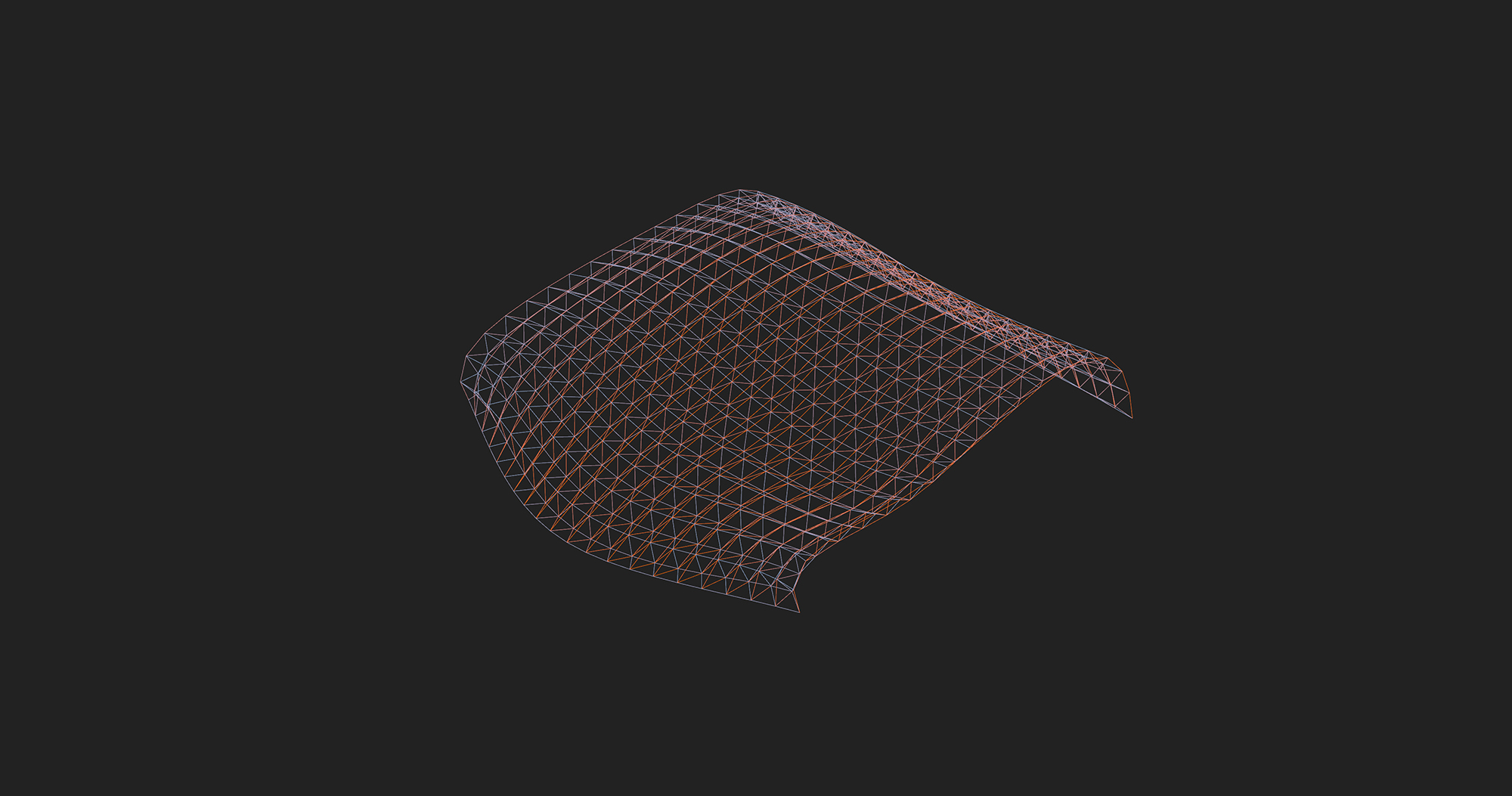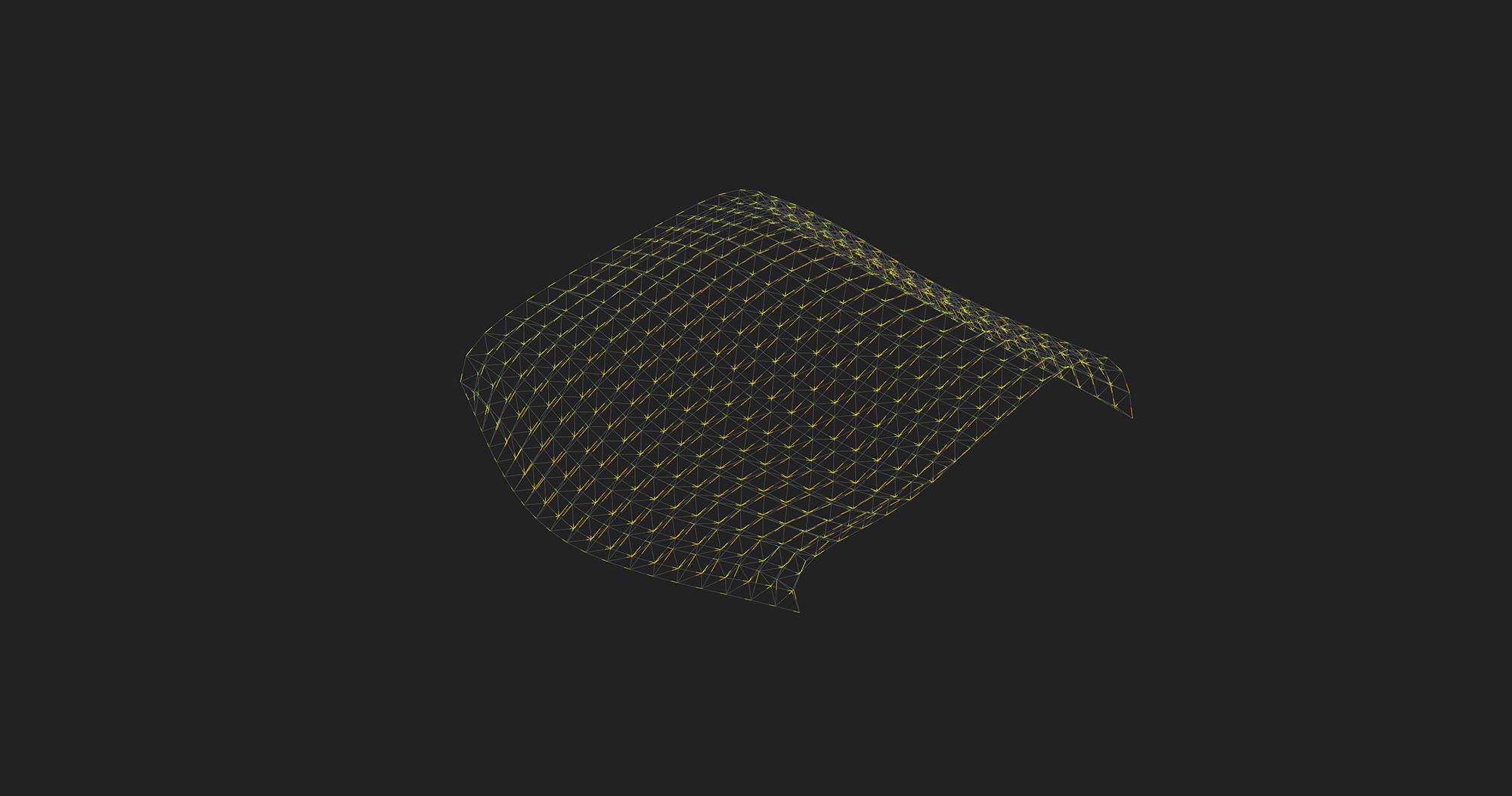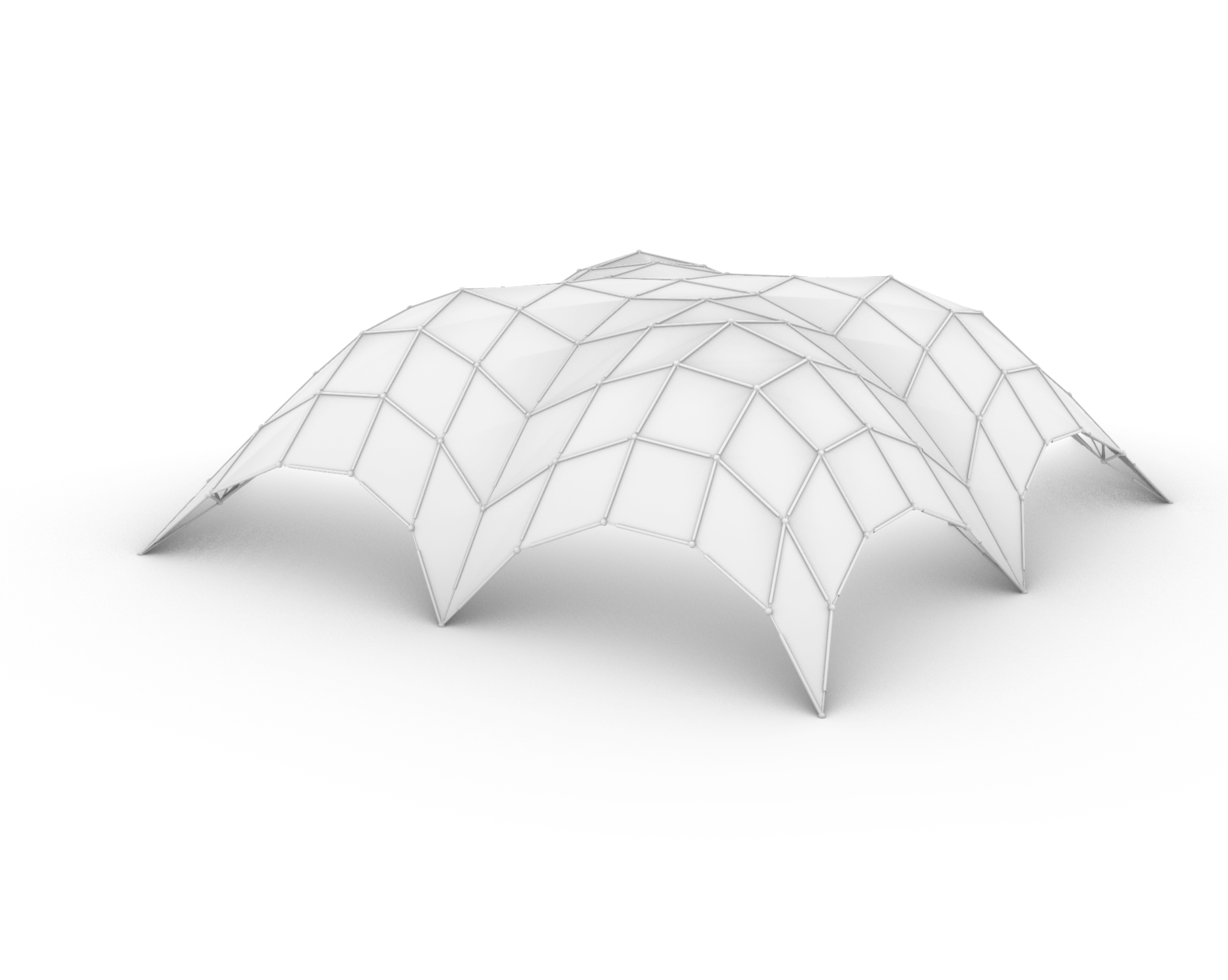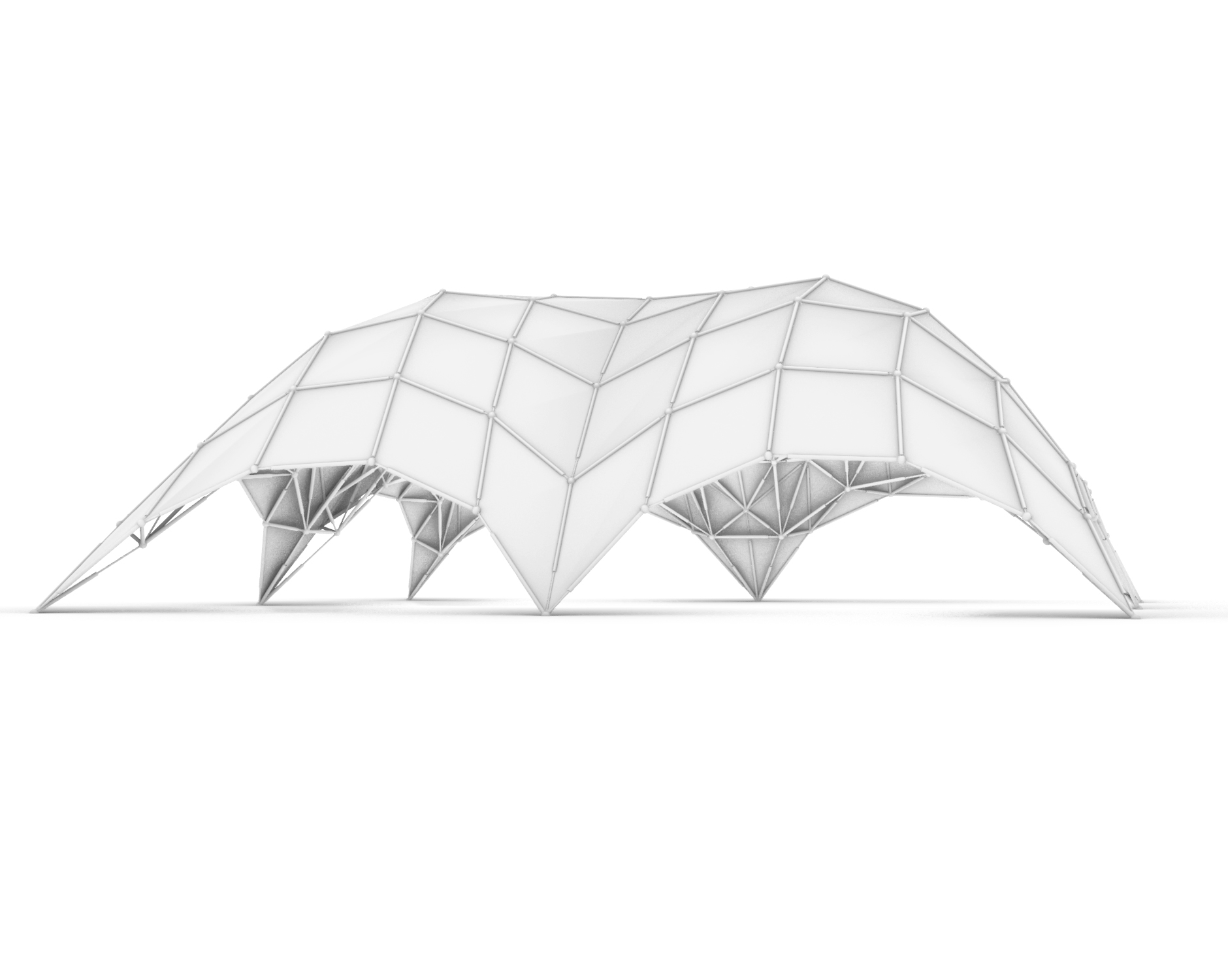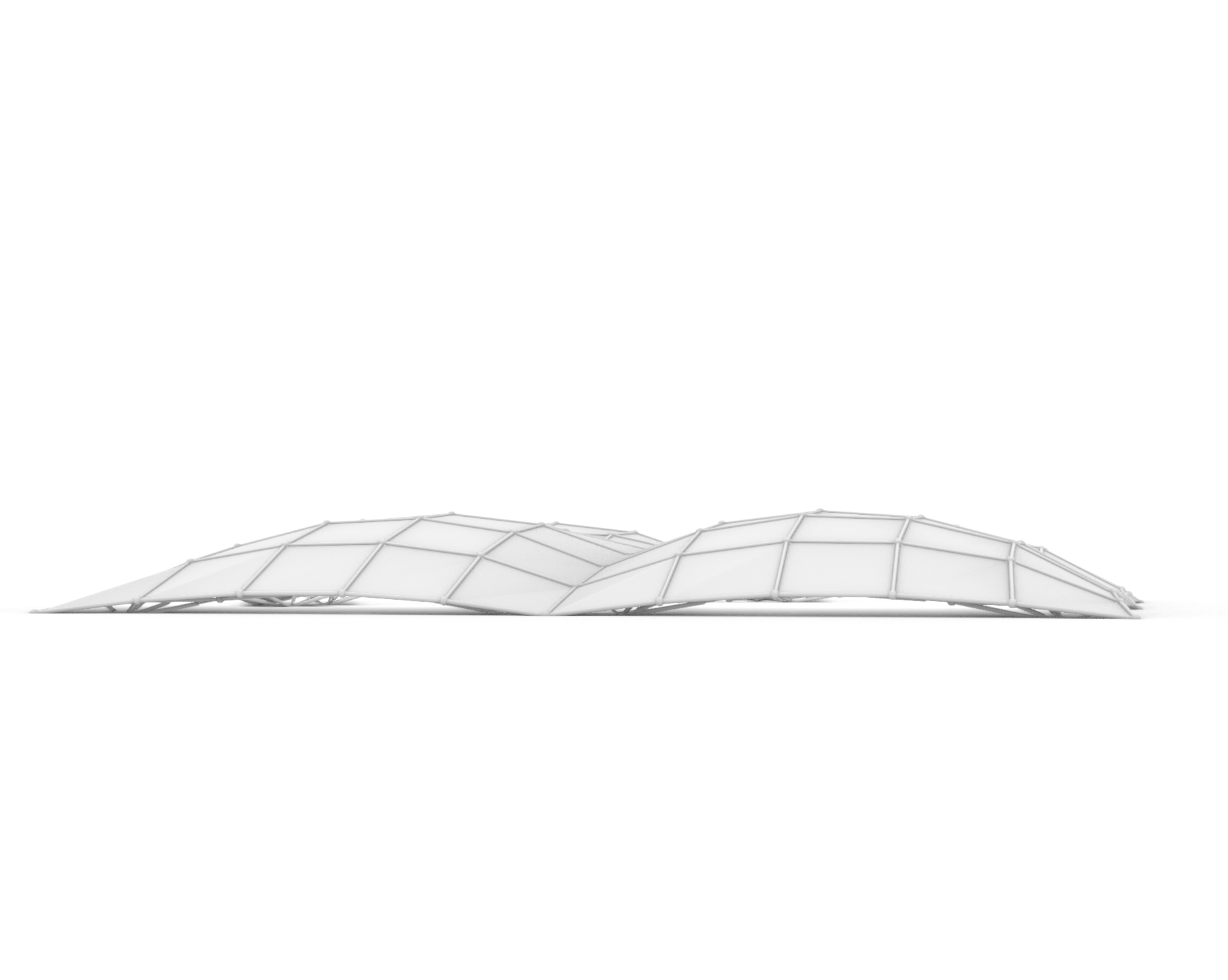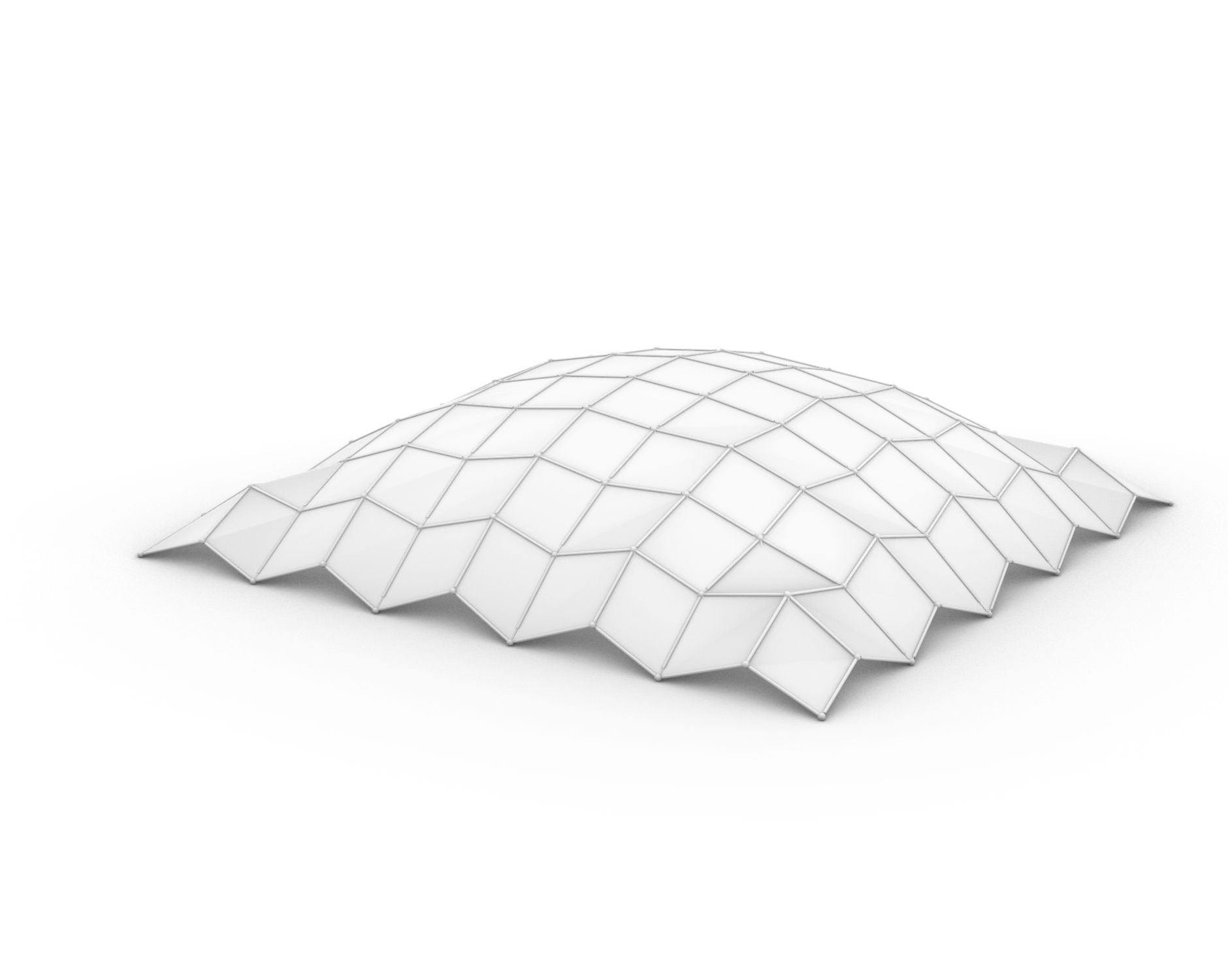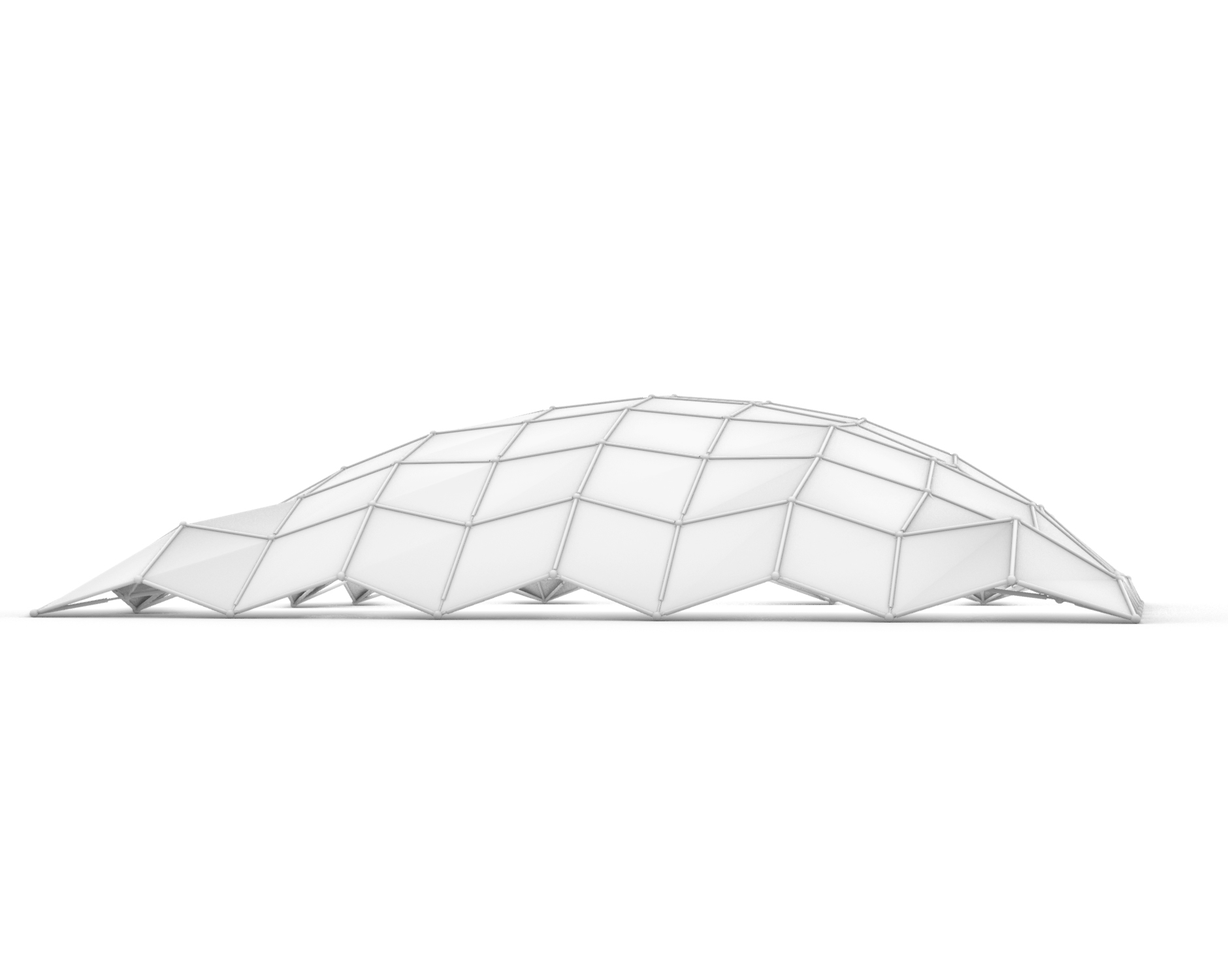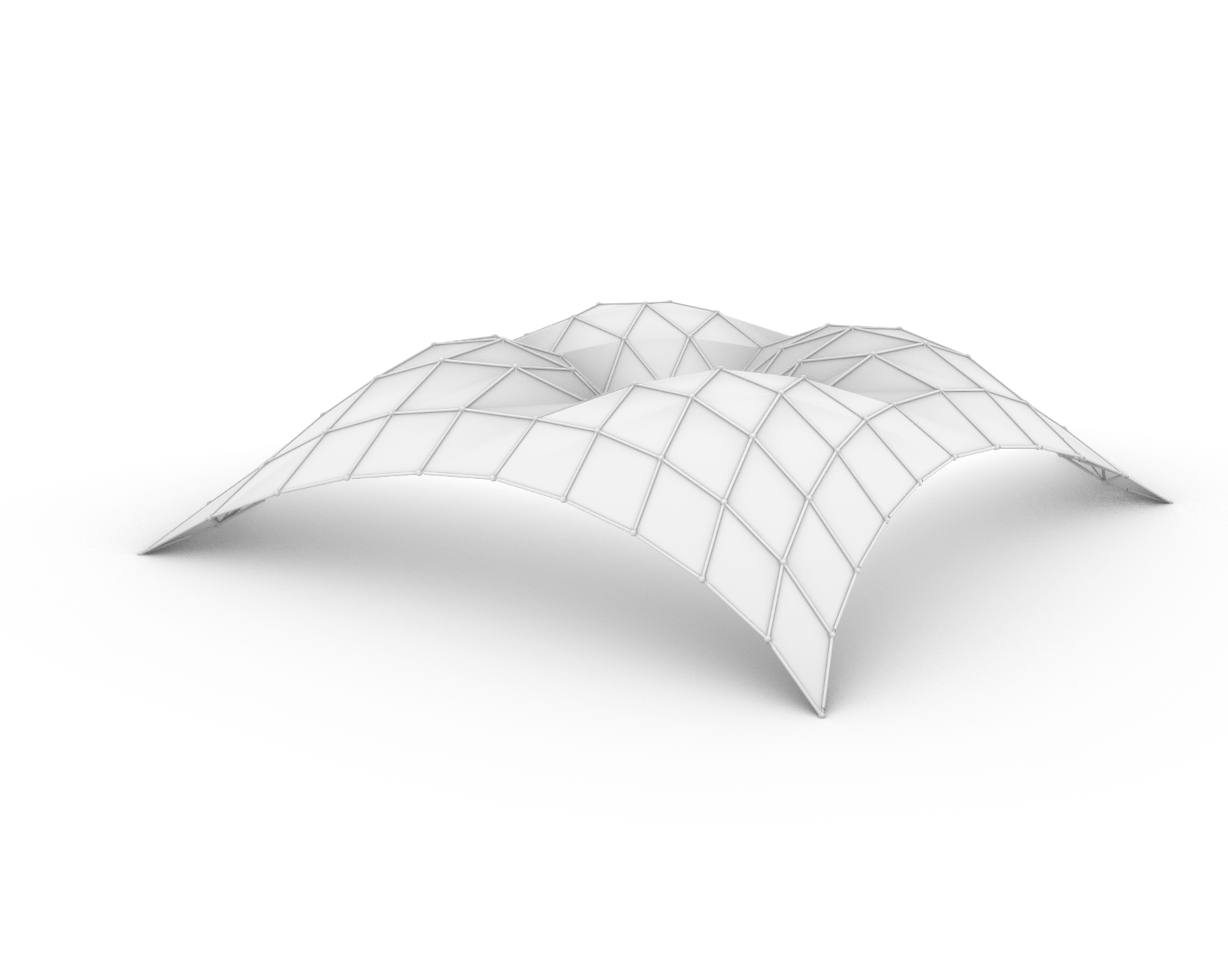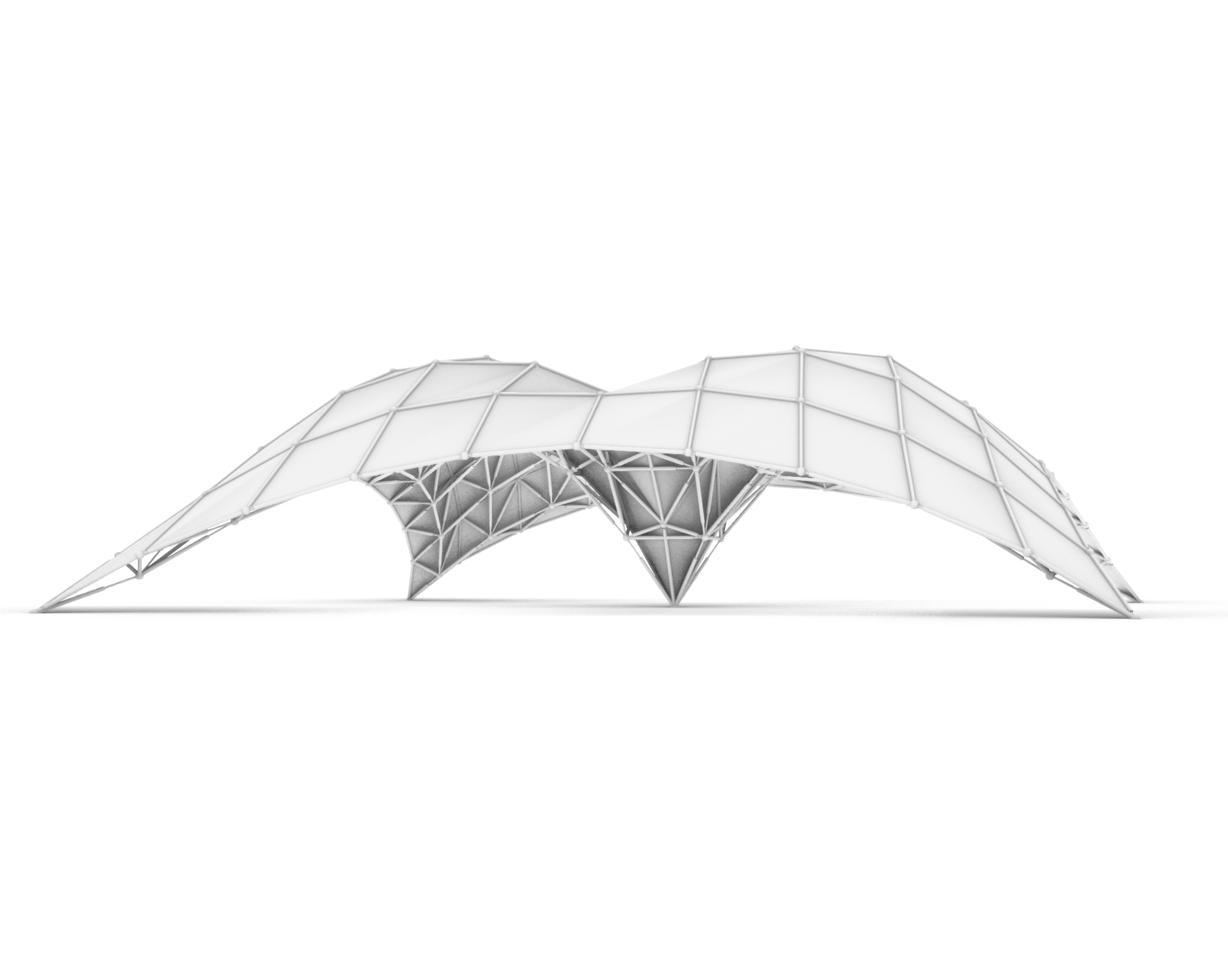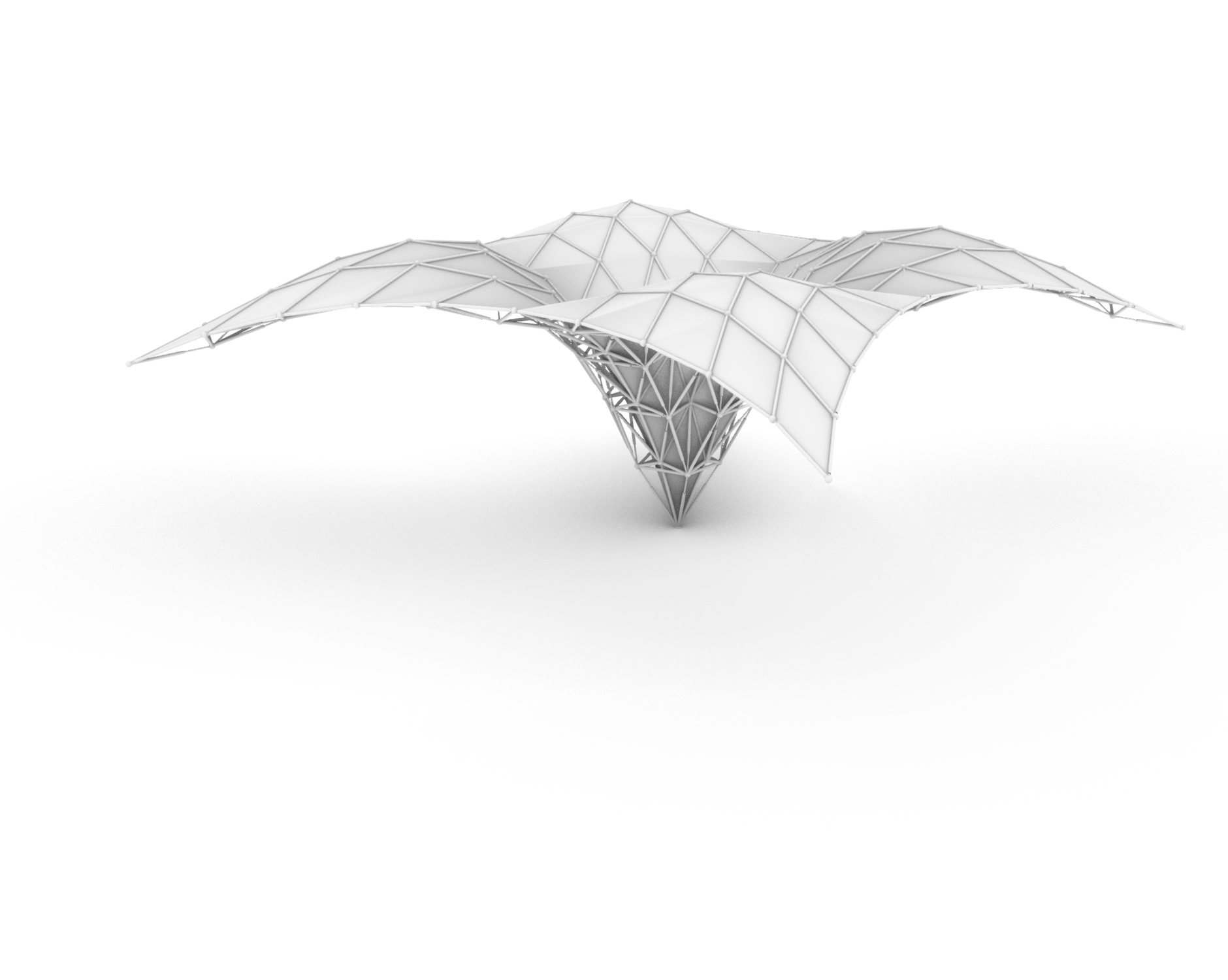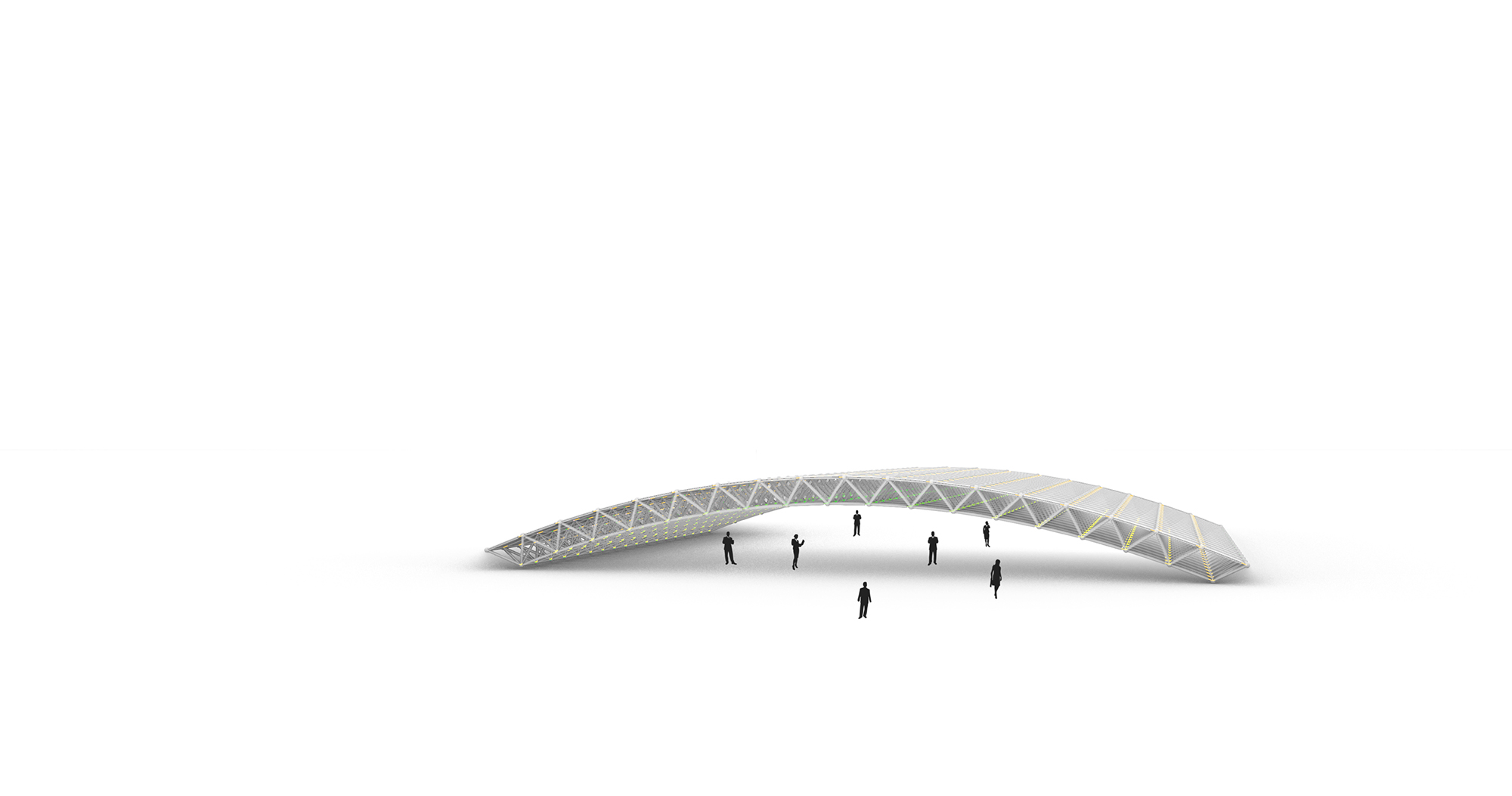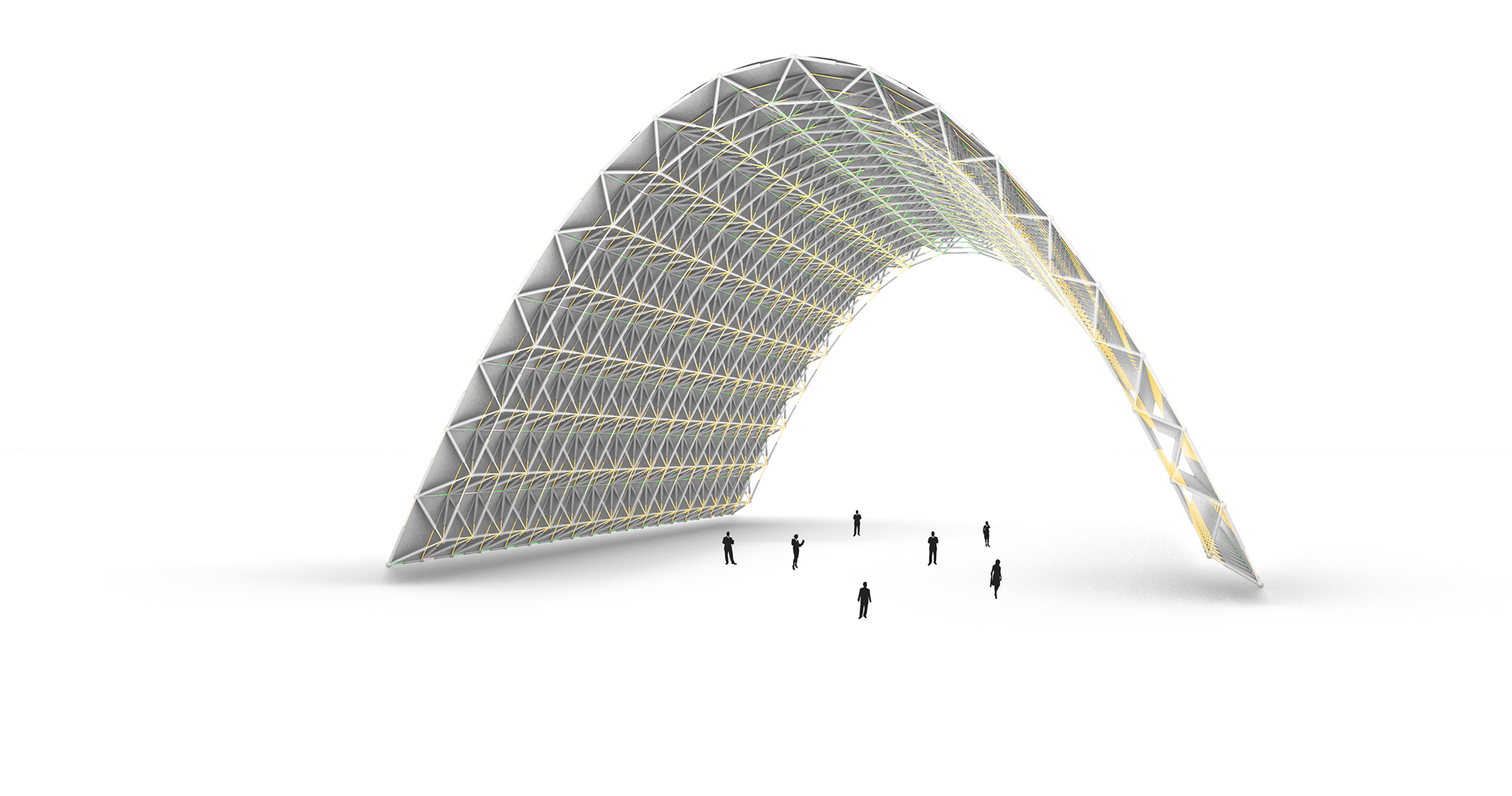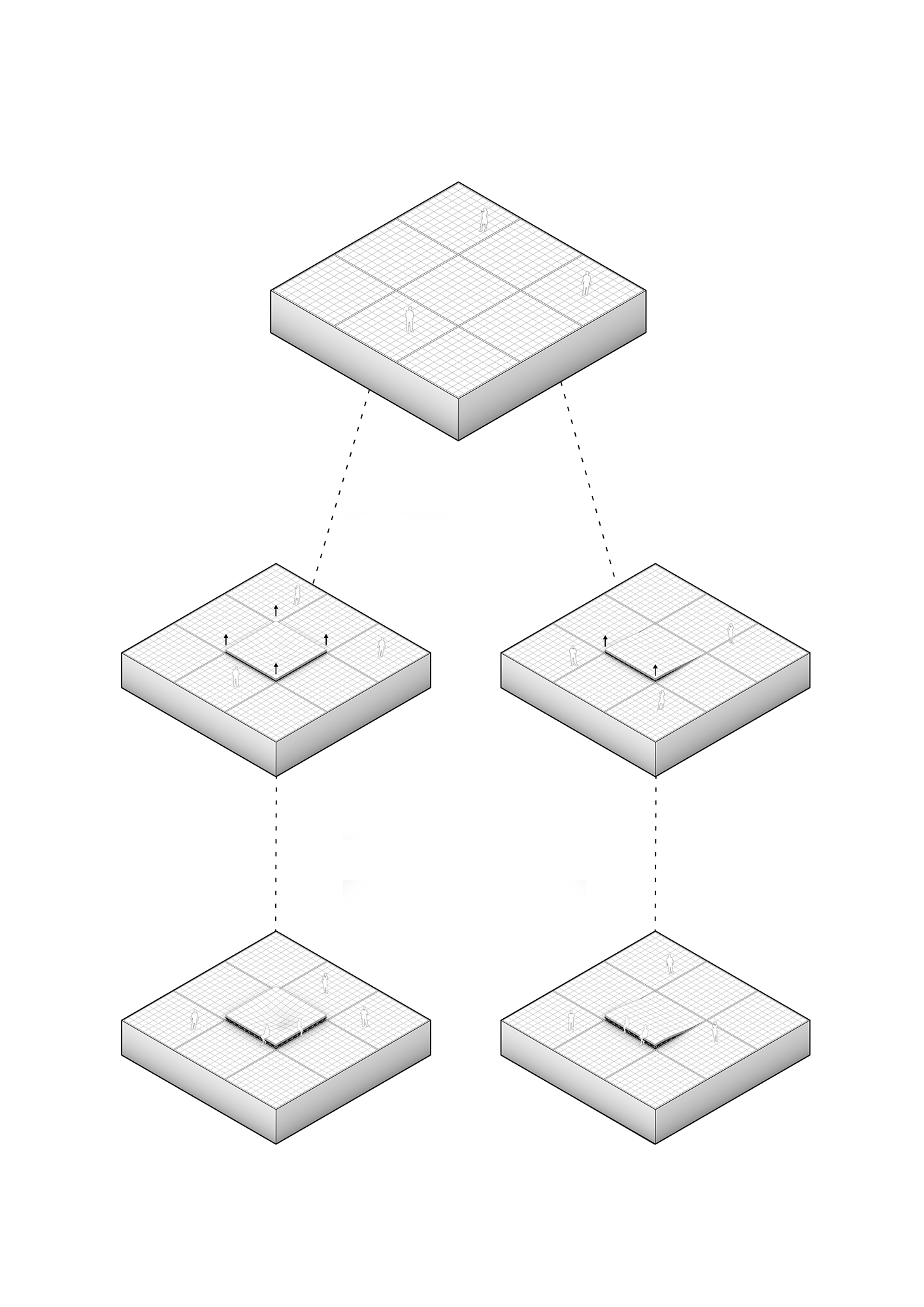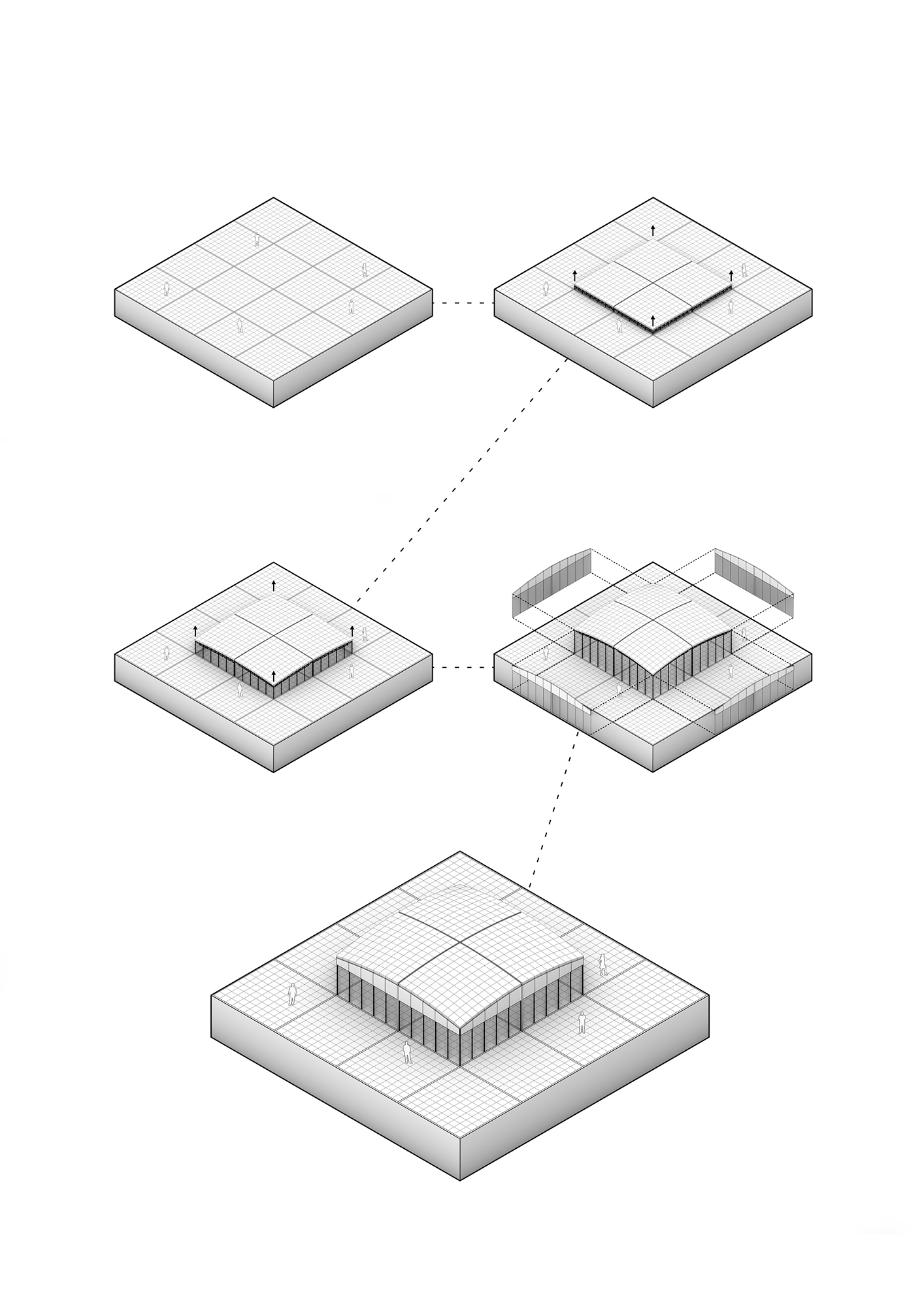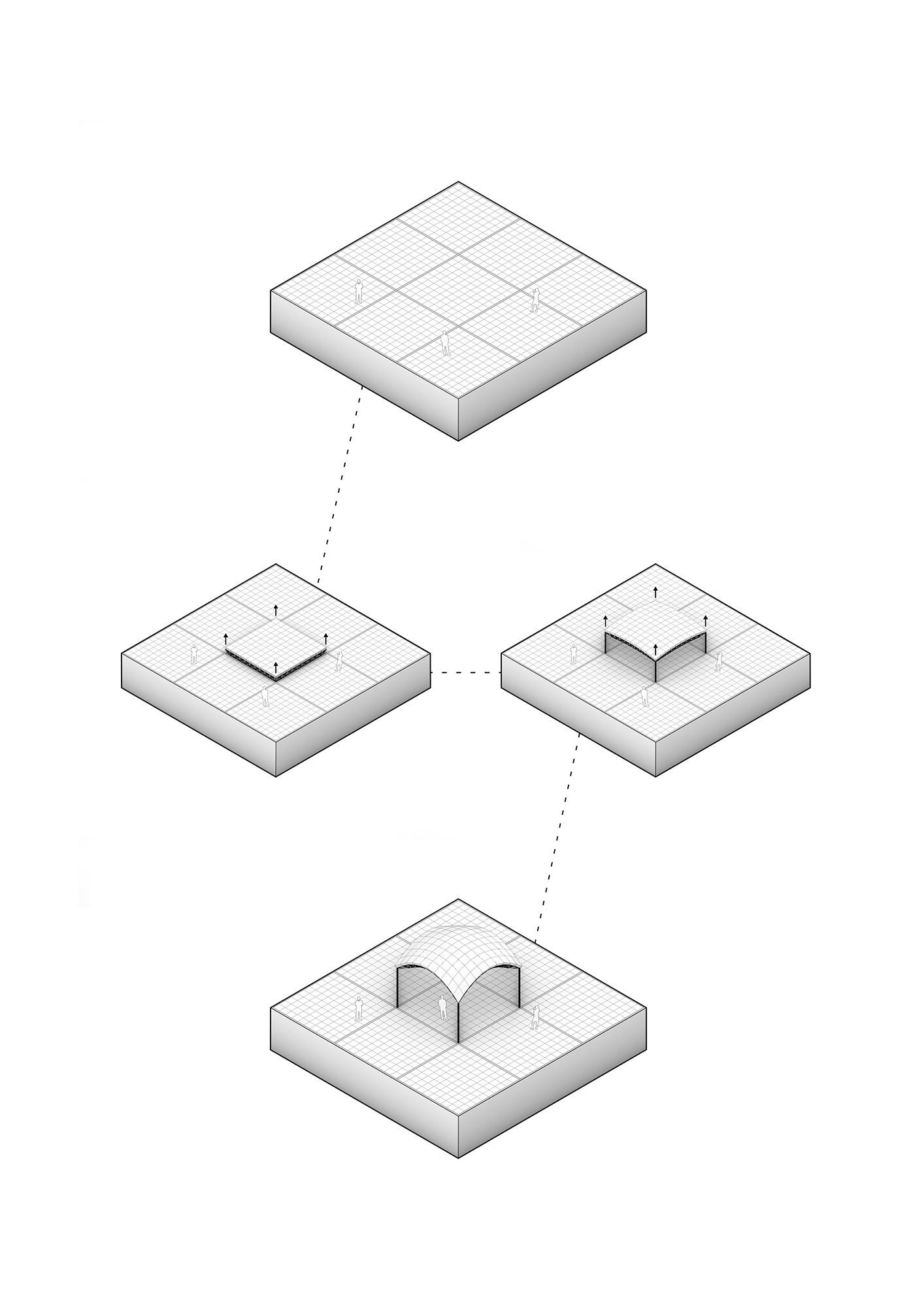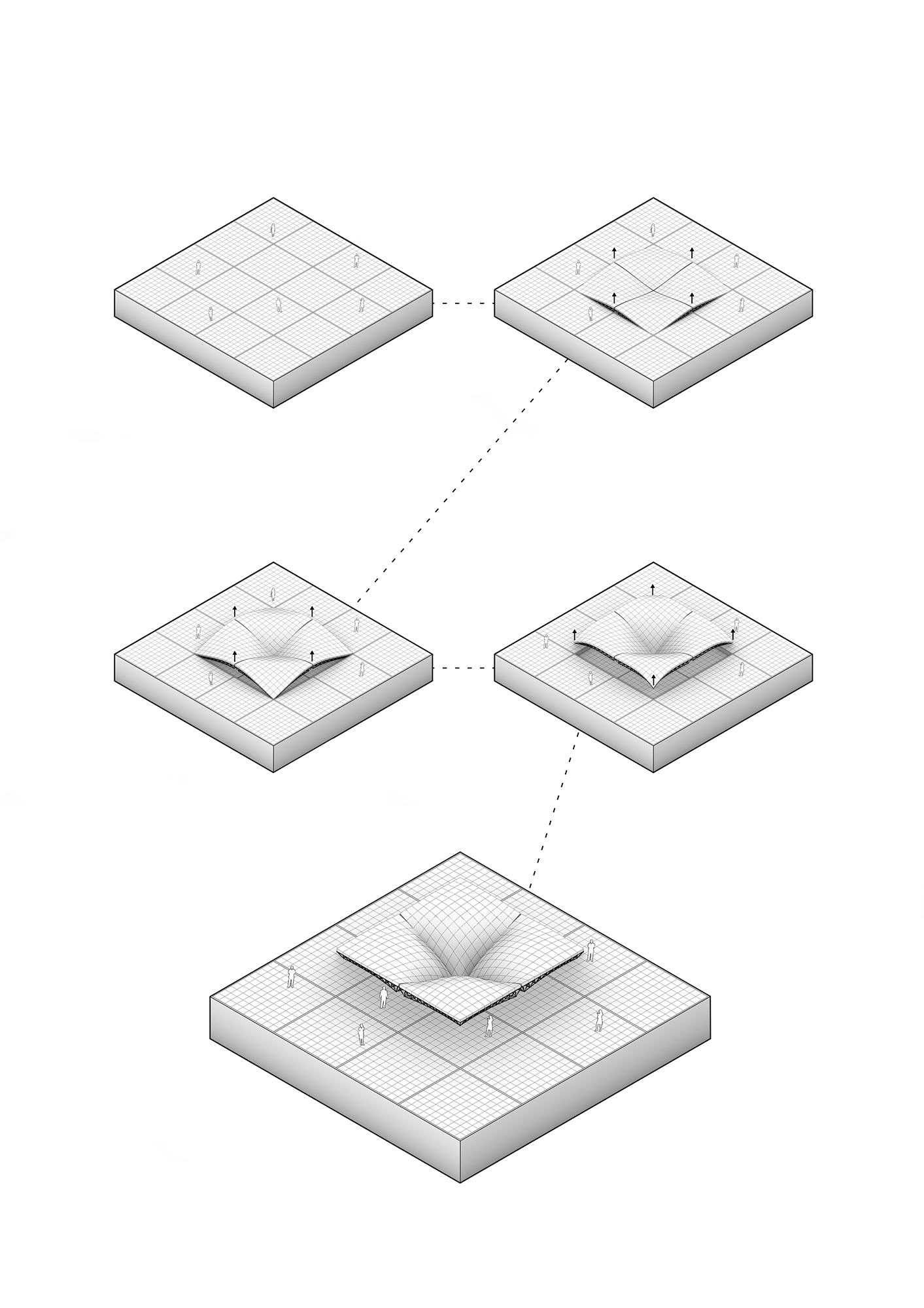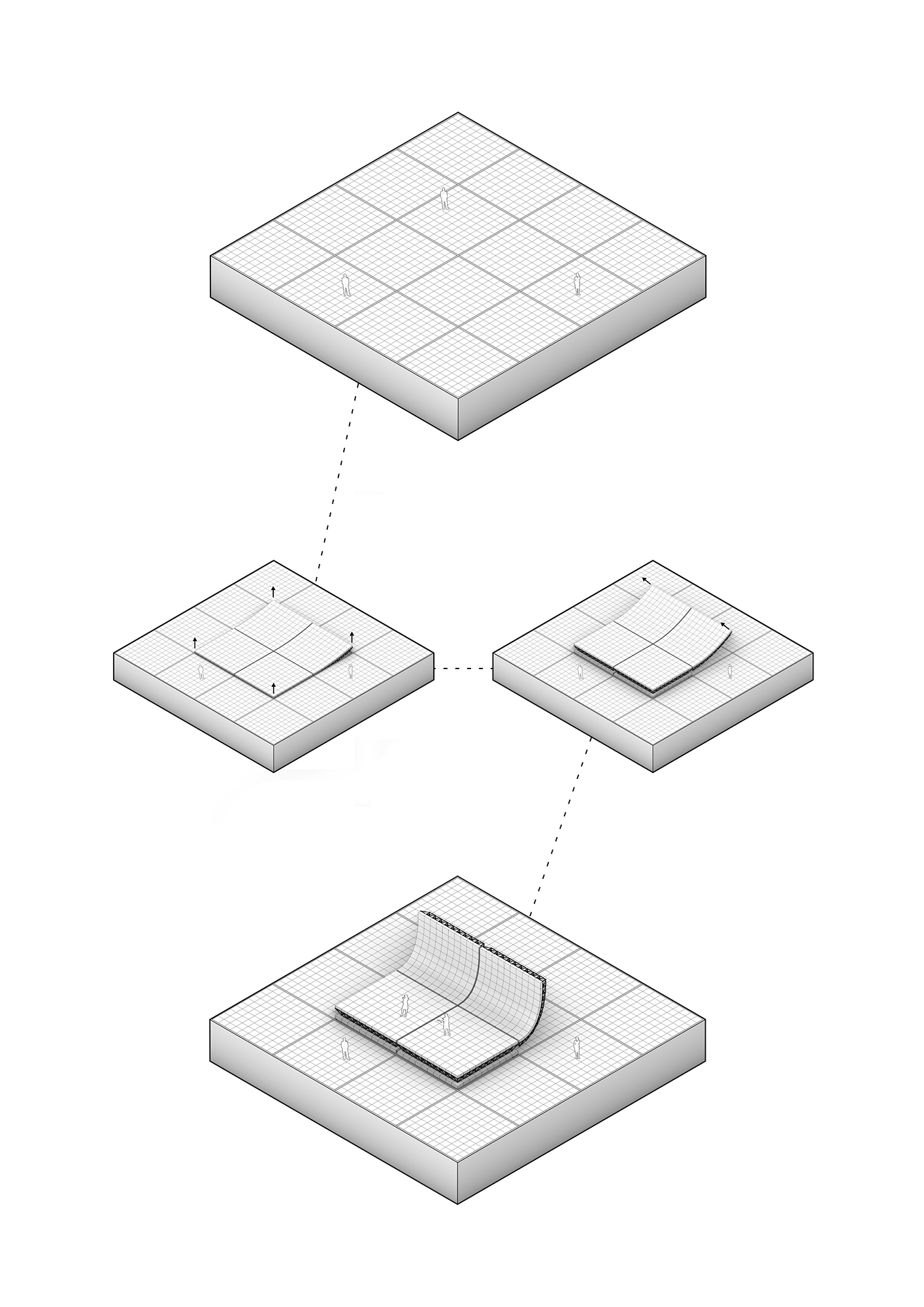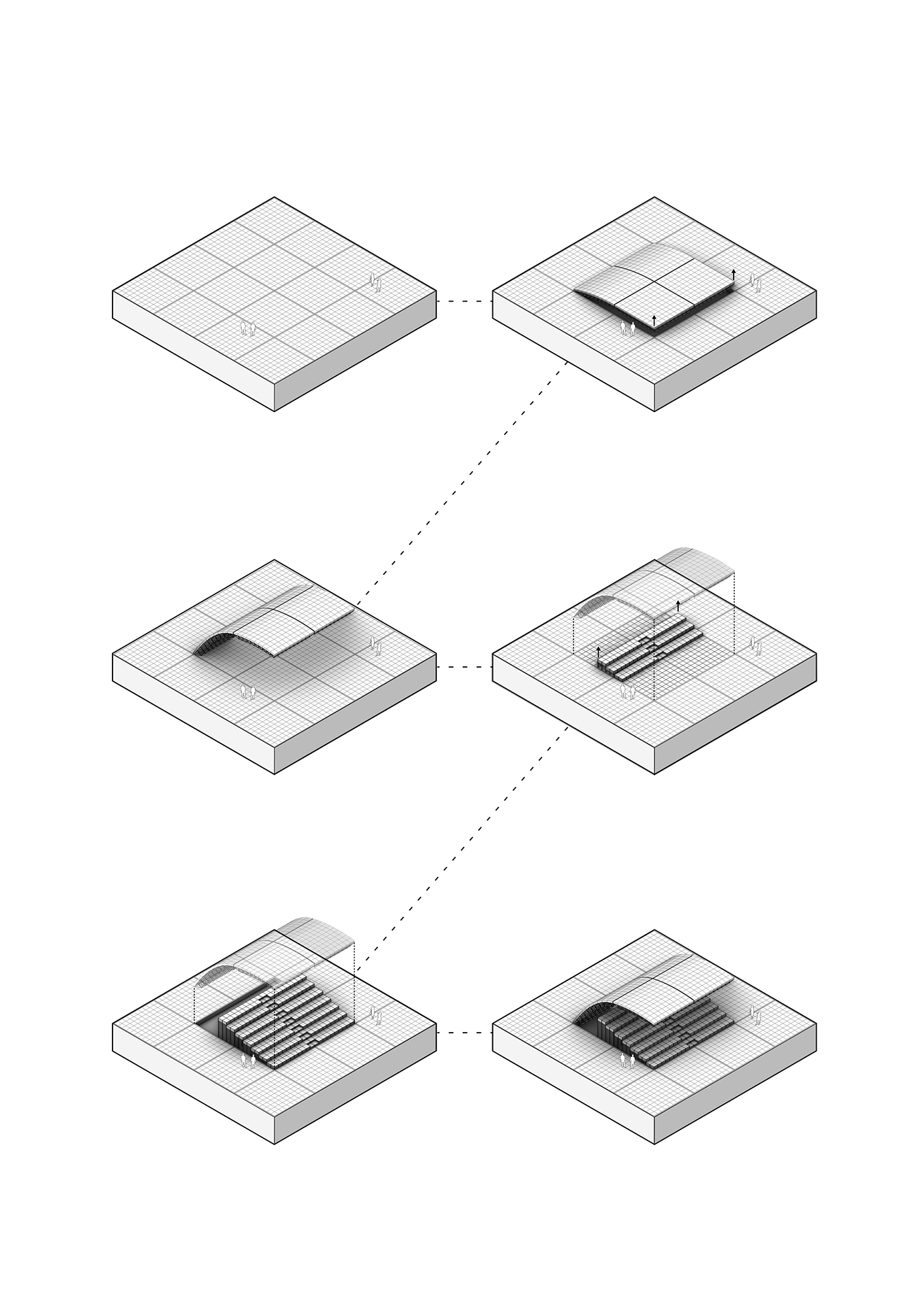System Analysis
Finding the systems limits and to set dimensions to the structure is done by a three-step analysis of the system.
The first part is to analyse each line element in the space frame and the length of each line. By finding the shortest and the longest element to create a domain for which each other element is within. Every element in the structure will have a set starting length which will be the minimum length of that line element. Based on the length of that starting element, the maximum extension for that line element can then be calculated.
This is done in step two, by grouping all the line elements based on their total lengths and then decide a length for the fixed segment of that element. The final step of the process is to analyse each elements extension and making sure that it is within its limits.
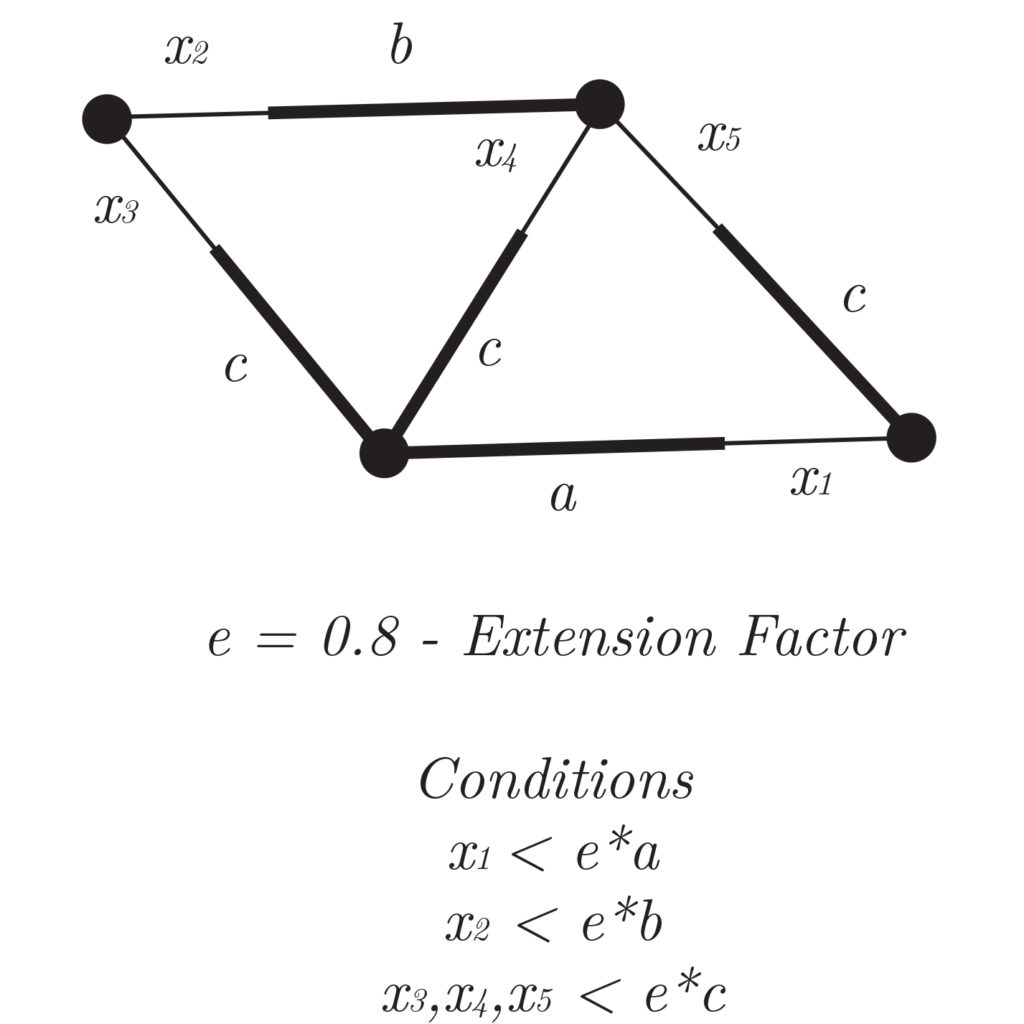
To be able to test the boundaries and limits of the system there are some conditions the system must follow. Since each element in the system is a hydraulic cylinder, they all have limits to what they can be extended to. Previously each line element was given a starting length a, b or c, which is the segment of the hydraulic cylinder that is fixed. Each line element or hydraulic cylinder in the system can be extended to some degree, this can be explained with xn.
For example, the length of element a is therefore, la = a + e*x1. With e being the factor of how much each element can extend, in this case e = 0.8. This is so that an element cannot double its length or grow even longer, there is always some overlapping in each hydraulic cylinder.


Transformations
By using the analysis view on the system, to control that the system can take the shape designed without any errors. As well as checking during the transformation if the system can transform between the different shapes. When designing a system that can transform between forms, the analysis described in System Analysis is a key factor for dimensioning the system. Each form that it intends to form must be checked using the same dimensions as well as the transitioning between every form.
Each element in the system is quite limited to its maximum extension and the transformation is not that drastic in each actuator. However, in a larger system with many actuators that can extend, the system can create very drastic changes to a structure and the spatial experience of that space. In this example the system is used on a simple single curved surface, one shows the system almost fully retracted and as small as possible. The other, pushing the system to its limits by almost fully extending every single actuator.
In this example the total transformation in volume is 8,9 times larger with the system fully extended compared to retracted.

